Centriole growth is limited by the Cdk/Cyclin-dependent phosphorylation of Ana2/STIL
- PMID: 35861803
- PMCID: PMC9442473
- DOI: 10.1083/jcb.202205058
Centriole growth is limited by the Cdk/Cyclin-dependent phosphorylation of Ana2/STIL
Abstract
Centrioles duplicate once per cell cycle, but it is unclear how daughter centrioles assemble at the right time and place and grow to the right size. Here, we show that in Drosophila embryos the cytoplasmic concentrations of the key centriole assembly proteins Asl, Plk4, Ana2, Sas-6, and Sas-4 are low, but remain constant throughout the assembly process-indicating that none of them are limiting for centriole assembly. The cytoplasmic diffusion rate of Ana2/STIL, however, increased significantly toward the end of S-phase as Cdk/Cyclin activity in the embryo increased. A mutant form of Ana2 that cannot be phosphorylated by Cdk/Cyclins did not exhibit this diffusion change and allowed daughter centrioles to grow for an extended period. Thus, the Cdk/Cyclin-dependent phosphorylation of Ana2 seems to reduce the efficiency of daughter centriole assembly toward the end of S-phase. This helps to ensure that daughter centrioles stop growing at the correct time, and presumably also helps to explain why centrioles cannot duplicate during mitosis.
© 2022 Steinacker et al.
Figures
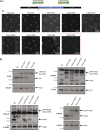
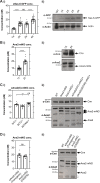
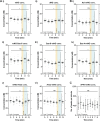
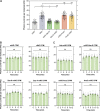


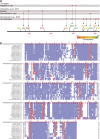
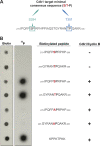

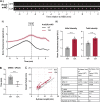
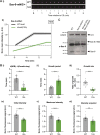


Similar articles
-
Asterless licenses daughter centrioles to duplicate for the first time in Drosophila embryos.Curr Biol. 2014 Jun 2;24(11):1276-82. doi: 10.1016/j.cub.2014.04.023. Epub 2014 May 15. Curr Biol. 2014. PMID: 24835456 Free PMC article.
-
A homeostatic clock sets daughter centriole size in flies.J Cell Biol. 2018 Apr 2;217(4):1233-1248. doi: 10.1083/jcb.201801014. Epub 2018 Mar 2. J Cell Biol. 2018. PMID: 29500190 Free PMC article.
-
An ordered pattern of Ana2 phosphorylation by Plk4 is required for centriole assembly.J Cell Biol. 2018 Apr 2;217(4):1217-1231. doi: 10.1083/jcb.201605106. Epub 2018 Mar 1. J Cell Biol. 2018. PMID: 29496738 Free PMC article.
-
SAPs as a new model to probe the pathway of centriole and centrosome assembly.Biochem Soc Trans. 2021 Jun 30;49(3):1233-1240. doi: 10.1042/BST20200833. Biochem Soc Trans. 2021. PMID: 33960367 Free PMC article. Review.
-
The PLK4-STIL-SAS-6 module at the core of centriole duplication.Biochem Soc Trans. 2016 Oct 15;44(5):1253-1263. doi: 10.1042/BST20160116. Biochem Soc Trans. 2016. PMID: 27911707 Free PMC article. Review.
Cited by
-
A simple Turing reaction-diffusion model explains how PLK4 breaks symmetry during centriole duplication and assembly.PLoS Biol. 2023 Nov 20;21(11):e3002391. doi: 10.1371/journal.pbio.3002391. eCollection 2023 Nov. PLoS Biol. 2023. PMID: 37983248 Free PMC article.
-
Centrioles generate two scaffolds with distinct biophysical properties to build mitotic centrosomes.Sci Adv. 2025 Feb 7;11(6):eadq9549. doi: 10.1126/sciadv.adq9549. Epub 2025 Feb 7. Sci Adv. 2025. PMID: 39919171 Free PMC article.
-
Decoding protein phosphorylation during oocyte meiotic divisions using phosphoproteomics.Elife. 2025 Jul 17;13:RP104255. doi: 10.7554/eLife.104255. Elife. 2025. PMID: 40674131 Free PMC article.
-
Drosophila Alms1 proteins regulate centriolar cartwheel assembly by enabling Plk4-Ana2 amplification loop.EMBO J. 2025 Apr;44(8):2366-2395. doi: 10.1038/s44318-025-00382-8. Epub 2025 Feb 28. EMBO J. 2025. PMID: 40021845 Free PMC article.
References
Publication types
MeSH terms
Substances
Grants and funding
LinkOut - more resources
Full Text Sources
Molecular Biology Databases

